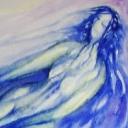Yahoo Answers is shutting down on May 4th, 2021 (Eastern Time) and beginning April 20th, 2021 (Eastern Time) the Yahoo Answers website will be in read-only mode. There will be no changes to other Yahoo properties or services, or your Yahoo account. You can find more information about the Yahoo Answers shutdown and how to download your data on this help page.
Trending News
shading:some people use shaders, but have you ever tried q-tips???
As an Artist I have found that those rolled up paper shaders don't work all too well. I ran out one day and looked around for something that would work I eventually came up with the idea of using q-tips and to be suprised they work very well. I suggest them to everyone who draws. other then those shaders,q-tips or your fingers has anyone used anything else???
5 Answers
- SydLv 41 decade agoFavorite Answer
I've used q-tips before, and paintbrushes and rolled-up tissues. One time in class I was pressed for time and I used the edge of my shirt! ;-)
I didn't even realize there was such a thing as those shaders until I got into the art classes at school, and I don't really like them much.
- 1 decade ago
Do NOT use Q-Tips or rolled up tissue because both of these leave tiny, lintlike substances , and they can ruin your work. The dry paint brushes suggested by the other answerers or the matte corners are terrific sugestions. There are so many pastel tools and brushes on the market that are much safer bets than Q-Tips or tissue.. The makeup tools are excellent, as mentioned. If the area to be shaded is large enough, a latex glove is good because the natural greases on your skin leave residue.
Creating the effect you want is important, and experimenting is part of the inventive process, but while experimenting be mindful of the consequences. One of my best pieces was made using a twig because an idea came to me when all I had with me was some ink. The main thing ( second to the intrinsic beauty of the art) is: you want your work to be of archival quality.
Finding out what other artists are doing and using in the Answer archive is a great source of info on what to use and how to's. There is a huge variety of art related websites on the internet where you can investigate some
tools and ideas you may wish to include in your supplies.
Source(s): Professional illustrator - joyfulpaintsLv 61 decade ago
Stomps (or stumps, or "shaders", or tortillons) are the best thing to get into tight corners. You can clean them off with sandpaper when they get dirty and don't lose their shape as quickly as Q-tips do.
Try also a tightly-wound kleenex or T-paper, a chamois (shammy), shirt-sleeve as the last person suggested, or a kneaded eraser. A strip or corner of matboard is great (and cheap). You can buy sponge make-up applicators in bulk (at the dollar store) and they work great as well as being washable & reusable.
Have fun. Use everything within reach.
Source(s): 30+ yrs an artist, 12+ yrs selling artists materials - 1 decade ago
I like to use dry paintbrushes. You can get very specific about the placement and value of shades with an angled filbert, or use an old bushy brush for broad shading.
This winter I found another fun use for paintbrushes....
While I'm waiting in the car for *whatever* and the windows fog over inside, I use a paintbrush to sketch on the window.
- How do you think about the answers? You can sign in to vote the answer.
- KokopelliLv 71 decade ago
You might try a paint brush.
Source(s): From the AEN "How to Get Along in Life Handbook" This answer is a finely tuned, precision instrument machined to tolerances of +/- .001" and was carefully handcrafted from the highest quality materials. No animals or plants were harmed in the answering of this question. Any similarity with any person, living or dead, is purely coincidental and unintended. What, me worry






